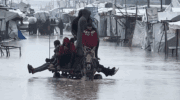Buried under rubble, lost in the chaos, decomposed beyond recognition: the desperate struggle to find thousands amid Israel’s ongoing war.
by Ibtisam Mahdi, reposted from +972 Magazine
Every day for the past seven months, 28-year-old Anas Juha and his surviving relatives have visited the ruins of their family home in the hope of finding the remains of their missing loved ones. On Dec. 6, a single Israeli airstrike crushed their five-storey building in Gaza City’s Al-Fayoumi neighborhood, killing 117 members of the family. Fifty-seven bodies were recovered and identified; 60 others have remained trapped under the debris ever since.
By sheer coincidence, Anas had left his wife and children at home that morning while they ate breakfast in order to run an errand at his father’s house nearby. Upon hearing the powerful blast, he rushed back to check on his family, and was horrified to find only a cloud of smoke and dust. “The whole building was reduced to rubble,” he told +972. “All I could think about was the 140 people who were inside.”
Anas began desperately searching for his family, together with his wounded cousins Mohammad and Naji, who had survived the strike after the force of the explosion propelled them out of the collapsing building. They conducted the initial search-and-rescue efforts alone, without the help of Gaza’s Civil Defense, which is tasked with locating survivors and martyrs after Israeli airstrikes; with internet and communication networks cut off across the Strip at the time, the survivors were unable to inform the emergency services of the attack. Ambulances arrived at the scene only after the first group of wounded people reached Al-Ahli Baptist Hospital in private cars, and reported the location of the strike.
Anas’ wife, Lena, and their two children, 5-year-old Kariman and 3-year-old Fayez, were not among those pulled out of the rubble. Nor were Lena’s parents and siblings.
After grasping the magnitude of the tragedy that had befallen him, Anas began writing down the names of those whose bodies could not be retrieved. Initially, the shock was so severe that he couldn’t recall many of their names, including those of his own wife and kids. But with time, he managed to note down all 60.
“We have been decimated,” Anas said of his family. “What was their crime, to be killed like this? None of them belonged to any faction or organization, and we weren’t targeted in any previous wars.”
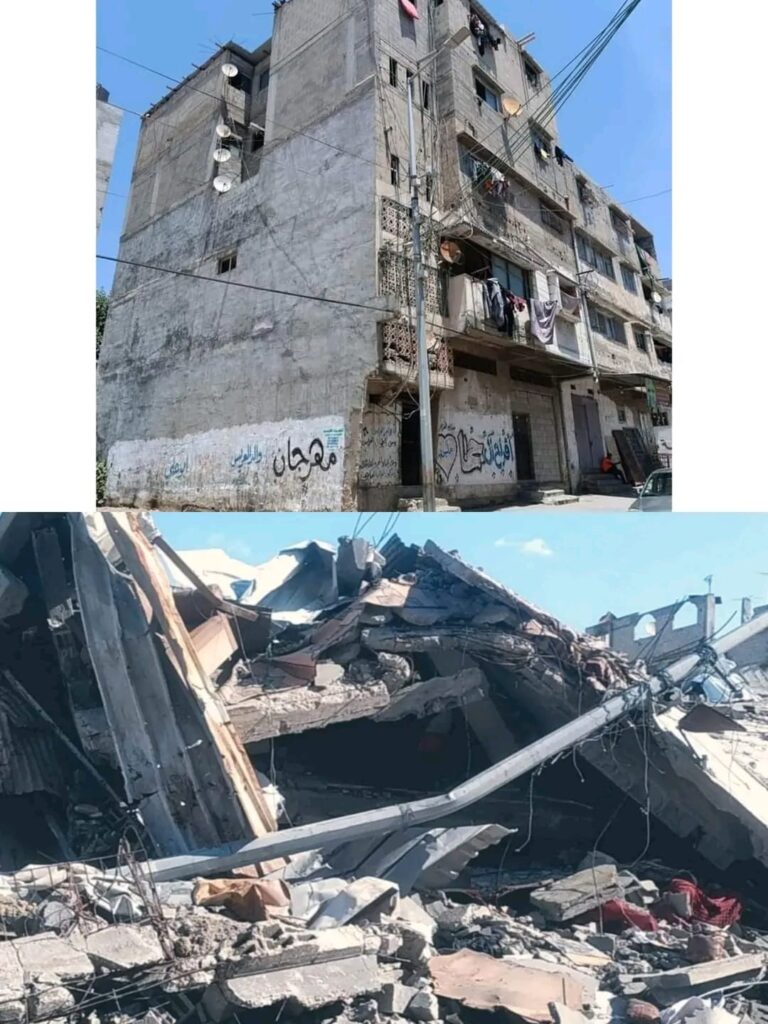
Despite the months that have passed since the bombing, Anas has not lost hope that he will one day be able to give his family a proper burial. For now, however, the Civil Defense cannot do more to help retrieve his relatives’ remains: their equipment is worn out, and they don’t have the personnel to cope with the scale of Israel’s bombardment, which is still ongoing.
“They are also busy responding to attacks where there may be survivors — they don’t have time for cases like ours,” Anas added. “Our hearts ache with anguish.”
Decaying corpses
Anas’ family are among thousands of Palestinians recorded as “missing” in Gaza since October 7, the majority of whom are thought to be trapped dead or alive under destroyed buildings and whose bodies have not been registered as arriving at hospitals. The International Committee of the Red Cross (ICRC) has received enquiries regarding more than 8,700 such cases; three-quarters of them remain unresolved.
Gaza’s Health Ministry estimates the total number of missing persons to be even higher: around 10,000. This number is not incorporated into the ministry’s overall death toll from Israel’s bombardment, which currently stands at more than 38,000. With most of Gaza’s medical facilities no longer functioning as a result of being bombed or forcibly evacuated, the work of retrieving, identifying, and counting all of the victims is likely to continue for years to come.
“When we learn about the number of people that we are unable to rescue, especially children, we feel frustrated and cry a lot over our helplessness, despite our efforts,” Civil Defense spokesperson Mahmoud Basal told +972. The worst part, he said, is when “we hear someone’s voice [calling] from under the rubble and we cannot rescue them.”
Basal explained that the extent of the devastation from Israel’s onslaught, the intensity of the attacks, and the restrictions on bringing new machinery and equipment into the besieged enclave make it impossible for rescue personnel to recover all of the bodies. According to him, Civil Defense teams also come under fire when responding to airstrikes, despite the protections they should be afforded under international law. “This is a heinous crime,” he stressed.
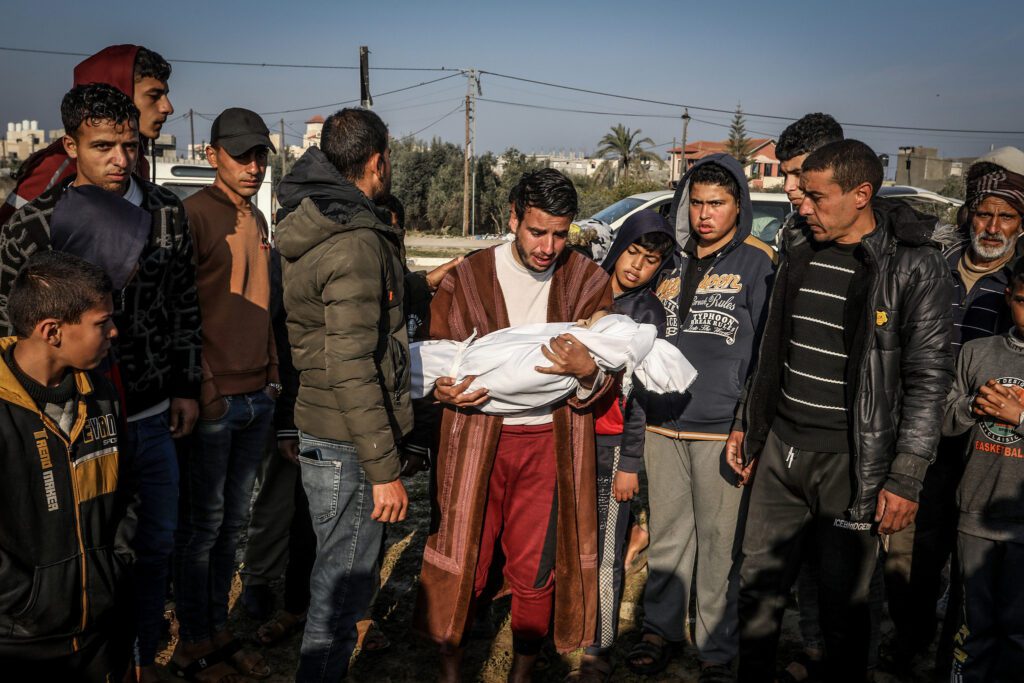
Basal emphasized that until there is a full cessation of Israeli attacks, the Civil Defense will be unable to recover most of the bodies of Gaza’s missing people. Even then, he estimates that it could take two to three years at best to recover them all. “During the temporary truce [which lasted seven days in late November], we tried to retrieve some missing persons from under the rubble of houses, but the limited time and lack of equipment slowed down the process,” he said.
Where they have managed to recover bodies, on days when Israel’s attacks have been less intense, Civil Defense teams have discovered corpses in states of advanced decay. “The bodies of martyrs had completely decomposed, especially those of children,” Basal recounted.
According to the UN, clearing the 40 million tons of rubble in Gaza could itself take 15 years. Already, Basal warned, “the continued accumulation of thousands of bodies under the rubble has started to spread diseases and epidemics — especially with the arrival of summer and the increase in temperatures, which accelerates the decomposition process.”
‘WCNSF’
Among the estimated 10,000 missing persons thought to be under the rubble, Save the Children estimates that more than half of them are children. Thousands more have been buried in unmarked or mass graves, detained by Israeli forces, or been lost or separated from their families in the chaos, taking the total number of Palestinian children whose whereabouts is currently unknown to approximately 21,000. Some of those who have arrived at hospitals unidentified are categorized by the morbid acronym “WCNSF”: wounded child, no surviving family.
For months, social media accounts in Gaza have been flooded with announcements about missing persons, especially children. These have only increased in the wake of the latest mass displacement created by Israel’s invasion of the southern city of Rafah in early May.
Among them is Ahmad Hussein, a young boy who has not yet turned 2. He disappeared during the exodus from the Awda Roundabout area in the center of Rafah, as residents fled toward the coastal area of Al-Mawasi.
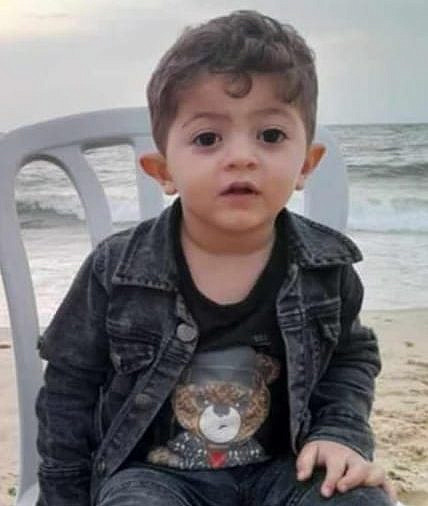
“We were three families transporting our belongings in two trucks,” Ahmad’s mother, Samah, told +972. “I thought Ahmad was with his father, who thought he was with me.
“We discovered he was missing while unloading the trucks in Asdaa’ area; I asked his father about him, but he did not know where Ahmad was.”
Ahmad’s father, Rami, quickly returned to the starting point of their journey, but he couldn’t find Ahmad, and nobody else in the area had seen him.
Rami subsequently filed reports with both the ICRC and the police regarding his son’s disappearance , and posted several announcements on social media.
“Every day, we search for him among the living and the dead,” Samah said. “We’ve looked everywhere — every hospital, every [humanitarian] organization, every police station. But we have not received any information.”
Taking my hand in hers, Samah continued: “If I knew he had been martyred, it would be easier for me than this uncertainty. We do not know if he is alive or dead, if he was attacked by dogs, detained, or taken by a soldier from the occupation army and kidnapped into Israel.”
Identifying bodies
Gaza’s police forces do not participate directly in the search for missing persons, due to their limited resources and the fact that police stations and officers are often targeted by the Israeli military. However, a source at the Khan Younis police station, who spoke to +972 on the condition of anonymity due to fear of being targeted, said that the police still try to assist where they can, albeit without coordination with or assistance from international organizations.
“There are no specialized search teams,” the source explained. “Instead, information is gathered from relatives, and announcements are disseminated on police-specific WhatsApp platforms regarding the missing person. The complainant’s mobile number, address, and photos are circulated. Once any information is found, the complainant is notified.”
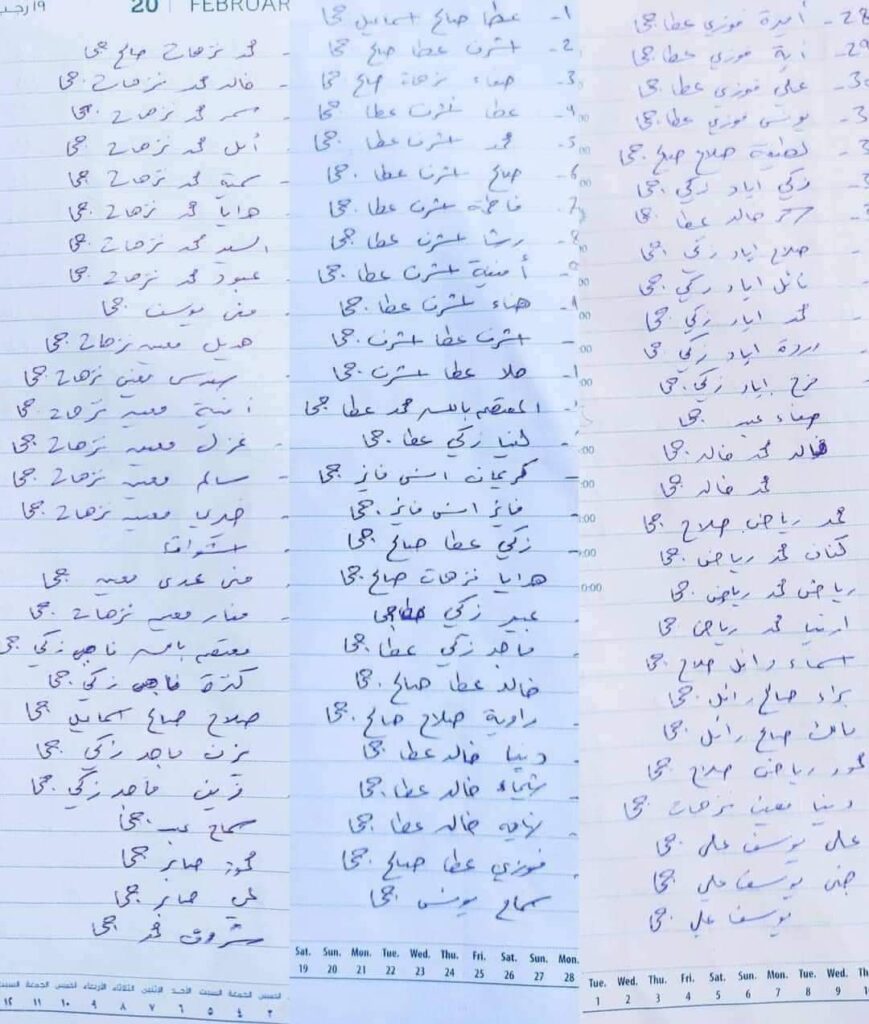
The source described the process of trying to identify bodies that arrive at hospitals: “When the body has already decomposed, photos of their clothing and any identifying marks are taken; this information, along with the location [where the body was found], is registered in the General Investigation Department’s records.
“When the body has not yet decomposed and the facial features are identifiable, the body is photographed, and those photos are posted on social media platforms,” the source continued.
“The body is then placed in the hospital refrigerator for three days. If it remains unidentified after this period, it is buried.”
When hospitals are too full of martyrs, however, the source explained that the bodies are assigned numbers and then buried immediately in a designated spot.
Upon being identified, “the number is replaced with the real name of the person, and they are removed from the missing persons list. The family can then decide whether to transfer the body to their family burial place, or leave it in the same burial place where it was initially interred.”
The source emphasized that the numbers of missing persons or those registered as unidentified are only estimates: every day, new bodies are registered as missing while others are identified. “To accurately ascertain all the figures, we first need the war to stop.”
Meanwhile, the ICRC has been actively working on family reunification since the war began, including by facilitating the release of detainees and returning them from Israeli detention centers to their families. According to ICRC’s spokesperson in Gaza, Hisham Mhanna, the organization has contacted more than 980 released detainees to collect information about their treatment and detention conditions. In doing so, he explained, the ICRC aims to “strengthen our dialogue with relevant authorities on this matter, and increase pressure on the Israeli authorities to permit the resumption of prison visits.”
‘Meaningless’
According to Gaza’s Health Ministry, Israel’s bombardment has killed more than 14,000 Palestinian children since October 7, approximately half of whom have not yet been fully identified. A recent UN report noted that children were also among those recently discovered in mass graves, where bodies showed signs of torture, summary executions, and potential cases of people being buried alive.
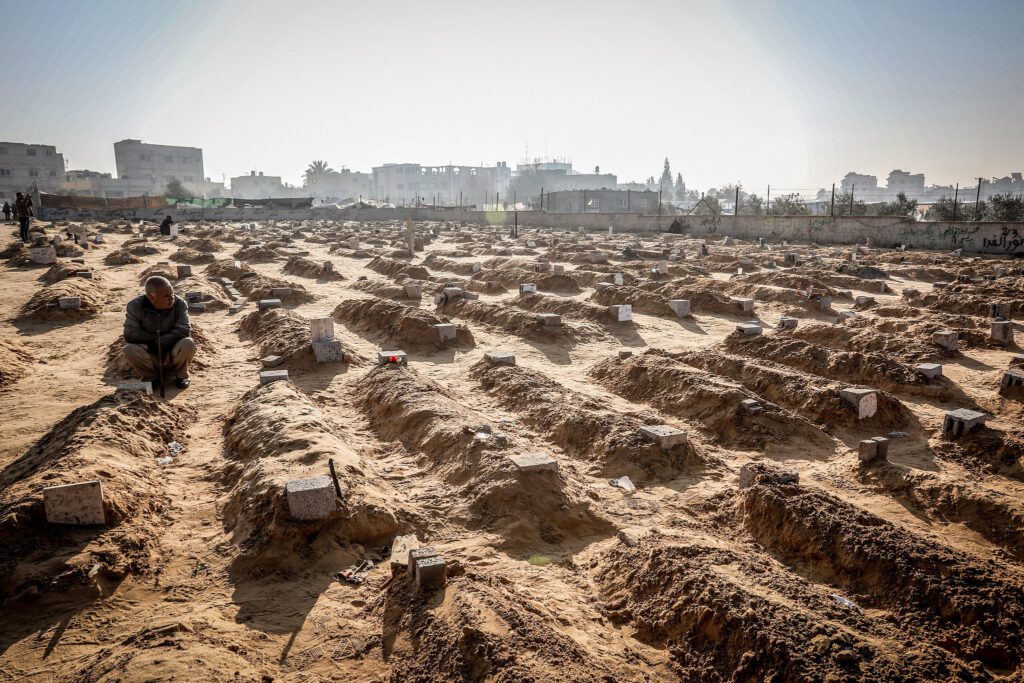
As Save the Children explains, children are seven times more likely than adults to die from blast injuries due to the vulnerability of their bodies, which means they are also more likely to suffer wounds so horrific that their bodies are deformed beyond recognition. But sometimes, children’s small sizes can be an asset, saving them from being crushed by rubble or struck by shrapnel.
Two-year-old Hamza Malaka, for example, was the sole survivor — a “WCNSF” — of an Israeli airstrike on Oct. 14 that wiped out multiple generations of his family, including elderly people, young children, and a pregnant woman. Nine months later, no one has been able to determine the total number of martyrs still trapped under the rubble of his house in the Zeitoun neighborhood of Gaza City. According to neighbors’ estimates, the family comprised 26 people, some of whose bodies are still to be recovered.
Hamza’s uncle, Mohammad, who lives in California, told +972 that he arranged for a friend to look after Hamza until he can find a way to evacuate the child from Gaza and take him into his own care. “I do not know how many people were in the house when it was bombed, or how many had already left and are now displaced in other areas of Gaza,” Mohammad said.
Naji Juha, the cousin of Anas, wishes only to be able to give his 2-year-old daughter Kenzi a proper burial. After the airstrike on the family’s building that killed 117 of his relatives, he was able to recover the bodies of his mother, father, siblings, nieces, nephews, wife, and son — but the hardest thing, he said, is not knowing what happened to Kenzi.
“Was her body eviscerated? Did she burn to death in the explosion? Did she survive the blast before suffocating under the rubble?” With these unanswered questions, Naji is struggling to continue a life that he says has “become meaningless.”
Ibtisam Mahdi is a freelance journalist from Gaza specializing in reporting about social issues, especially concerning women and children. She also works with feminist organizations in Gaza on reporting and communications.
RELATED ARTICLES:
- ‘Not a normal war’: doctors say children have been targeted by Israeli snipers in Gaza
- Israeli prof: Israel tests weapons on Palestinian kids, tests drugs on prisoners
- Thanks to Gaza protests, Israel has a new crop of ‘battle tested’ weapons for sale
- ‘Suffering horrifically’: 10 months of Israel’s ‘war on children’ in Gaza / Israeli weapons packed with shrapnel causing devastating injuries to children in Gaza, Doctors say
- ‘I’m bored, so I shoot’: The Israeli army’s approval of free-for-all violence in Gaza
- Ilan Pappé on Israel’s Relentless War against Palestinian Children
- ‘Lavender’: The AI machine directing Israel’s bombing spree in Gaza
- The night Israel killed my family
- Israeli army hits Gaza family, uses them as human shields, and runs over their mother





